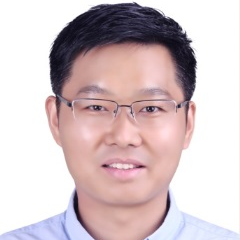Structure, Properties, and Applications of Optical Glass and Fiber
A special issue of Materials (ISSN 1996-1944). This special issue belongs to the section "Advanced and Functional Ceramics and Glasses".
Deadline for manuscript submissions: closed (20 September 2023) | Viewed by 14385
.png)
Special Issue Editor
2. Center of Materials Science and Optoelectronics Engineering, University of Chinese Academy of Sciences, Beijing 100049, China
Interests: glass science and technology; optical materials; mid-infrared soft glasses and fibers; laser–matter interaction; laser-induced damage mechanism
Special Issue Information
Dear Colleagues,
Glassmakers throughout history have experimented with glass, a non-crystalline, often transparent amorphous solid, but it was not until the last century that optical glass and fiber began to have an unparalleled impact on human civilization through revolutionarily advancing the development of optical and optics technology. This was achieved through widespread technological use in, for example, optical imaging and displaying, solid-state and fiber lasers, optical amplifiers, fiber-optical telecommunication, sensing, and optics.
Optical glasses and fibers not only transmit light, but can amplify light and produce a novel light source that covers a wide spectral range from ultraviolet to infrared, depending on the glass host systems and fabrication techniques. The glass host systems include, but are not limited to, silica, silicate, borate, phosphate, fluorophosphate, fluoride, heavy metal oxide glasses (tellurite, germanate, gallate, bismuthate, etc.), and chalcogenide glass. The glass composition and structure co-determine the thermal, mechanical, physic-chemical, and optical properties (refractive index and dispersion, transmission window, optical absorption, stress/thermo/magneto/acousto-optic coefficients, etc.) of the produced glasses. For optical fibers, no matter step index or photonic crystal fiber, solid or hollow core fiber, their structural parameters and fabrication techniques play equally important roles in controlling their properties, e.g., zero dispersion and cutoff wavelength, attenuation, birefringence, and nonlinearity, etc. The very high flexibility in regulation of their performance through composition–structure tailoring makes optical glass fibers find increasingly wide applications in high-power laser producing, amplifying, transforming, and advanced fiber sensing, as well as generation of novel supercontinuum light sources, etc.
This Special Issue aims to present the latest works and findings in the research and development of optical glasses and fibers which give important contributions to the development of scientific research in the field of glass science and technology and fiber photonics. We invite a wide range of research on optical glasses and fibers: from fabrication, structure, and properties to their potential applications.
Within the scope of this Special Issue, it is our pleasure to invite you to submit original research papers, short communications, or state-of-the-art reviews.
Prof. Dr. Pengfei Wang
Guest Editor
Manuscript Submission Information
Manuscripts should be submitted online at www.mdpi.com by registering and logging in to this website. Once you are registered, click here to go to the submission form. Manuscripts can be submitted until the deadline. All submissions that pass pre-check are peer-reviewed. Accepted papers will be published continuously in the journal (as soon as accepted) and will be listed together on the special issue website. Research articles, review articles as well as short communications are invited. For planned papers, a title and short abstract (about 100 words) can be sent to the Editorial Office for announcement on this website.
Submitted manuscripts should not have been published previously, nor be under consideration for publication elsewhere (except conference proceedings papers). All manuscripts are thoroughly refereed through a single-blind peer-review process. A guide for authors and other relevant information for submission of manuscripts is available on the Instructions for Authors page. Materials is an international peer-reviewed open access semimonthly journal published by MDPI.
Please visit the Instructions for Authors page before submitting a manuscript. The Article Processing Charge (APC) for publication in this open access journal is 2600 CHF (Swiss Francs). Submitted papers should be well formatted and use good English. Authors may use MDPI's English editing service prior to publication or during author revisions.
Keywords
- optical and laser glass
- rare-earth doped glass and fiber
- mid-infrared glass and fiber
- photonic crystal fiber
- polarization-maintaining fiber, glass structure
- optical properties
- fiber optics
Benefits of Publishing in a Special Issue
- Ease of navigation: Grouping papers by topic helps scholars navigate broad scope journals more efficiently.
- Greater discoverability: Special Issues support the reach and impact of scientific research. Articles in Special Issues are more discoverable and cited more frequently.
- Expansion of research network: Special Issues facilitate connections among authors, fostering scientific collaborations.
- External promotion: Articles in Special Issues are often promoted through the journal's social media, increasing their visibility.
- Reprint: MDPI Books provides the opportunity to republish successful Special Issues in book format, both online and in print.
Further information on MDPI's Special Issue policies can be found here.






